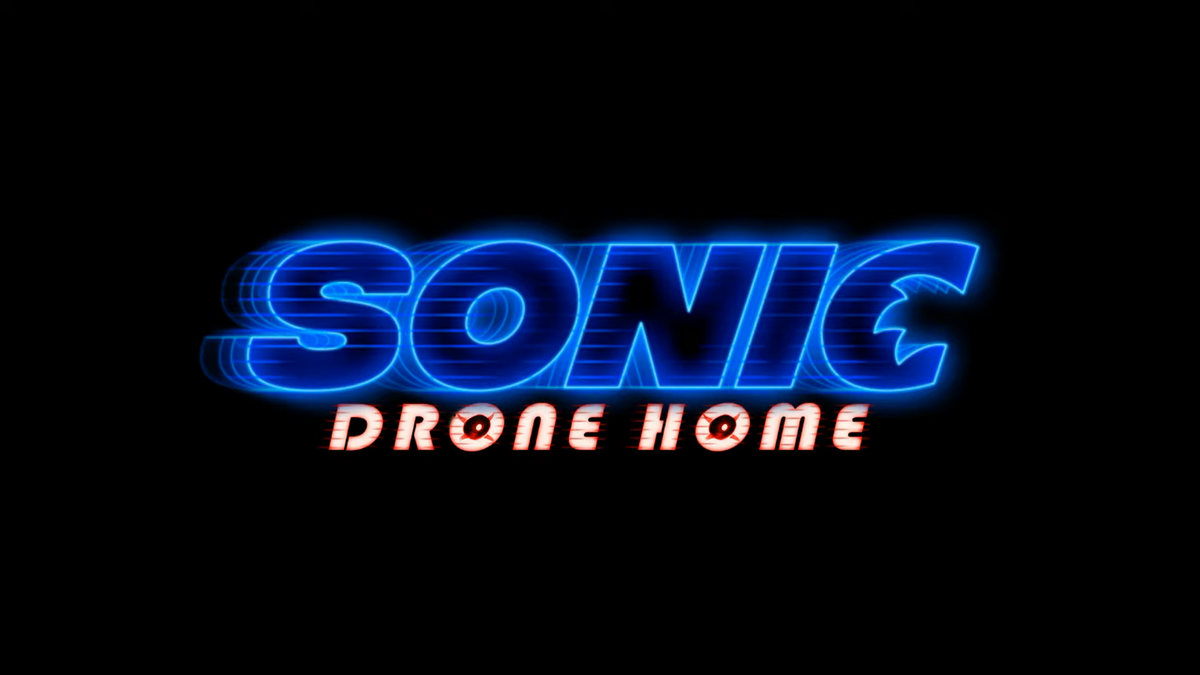Sonic Drone Home sets the stage for a fascinating exploration of a technologically advanced home system. This innovative concept leverages sonic technology and drone integration to create a truly intelligent and responsive living environment. We will delve into the potential functionalities, security implications, technological components, user experience, societal impact, and market viability of this groundbreaking technology, offering a comprehensive overview of its capabilities and future prospects.
This report examines the architecture of a hypothetical sonic drone home system, detailing its core components and their interactions. We’ll explore how this technology compares to existing smart home solutions, highlighting both its advantages and potential challenges. A key focus will be on addressing security concerns and ethical considerations related to privacy and surveillance.
Defining “Sonic Drone Home”
The concept of a “sonic drone home” represents a significant leap forward in smart home technology, integrating drone technology with advanced acoustic sensing and actuation capabilities. This system goes beyond current smart home functionalities by offering dynamic, spatially aware control and monitoring throughout the entire living space, both inside and potentially extending to the immediate surroundings.
Potential Functionalities and Applications
Sonic drone homes utilize small, autonomous drones equipped with a suite of sensors and actuators. These drones can perform various tasks, including environmental monitoring (temperature, humidity, air quality), security surveillance (intrusion detection, perimeter monitoring), automated cleaning (dusting, window cleaning), and even targeted delivery of small items within the home. The system’s adaptability allows for personalized automation, responding to real-time needs and preferences.
The concept of a “sonic drone home,” utilizing sound for navigation and obstacle avoidance, presents intriguing possibilities. This innovative technology contrasts sharply with the community-focused approach of The FC Barcelona Foundation’s ‘Polseres Blaugranes’ project is the perfect example of leveraging technology for social good, highlighting the diverse applications of technological advancements. Ultimately, both areas demonstrate the potential of technology to improve lives, albeit in vastly different ways.
Comparison with Existing Smart Home Technologies
While current smart home systems rely on fixed sensors and actuators, sonic drone homes offer a dynamic, mobile alternative. Existing systems lack the spatial awareness and adaptability of drone-based solutions. For example, a smart thermostat controls temperature in a zone, whereas a sonic drone home could precisely adjust microclimates within different rooms or even follow occupants to optimize comfort.
Similarly, security systems using fixed cameras have limited range and blind spots, whereas drones provide comprehensive surveillance.
Hypothetical Architecture for a Sonic Drone Home System
A sonic drone home system would consist of a central control unit, a network of autonomous drones, various sensors (acoustic, thermal, visual, chemical), and actuators (lighting, climate control, security systems). The drones would communicate wirelessly with the central unit, sharing sensor data and receiving instructions. The system would employ advanced algorithms for path planning, obstacle avoidance, and task allocation, ensuring efficient and safe operation.
The quiet hum of a sonic drone returning home offers a stark contrast to the excitement surrounding baseball news. For instance, the recent signing of Paul Goldschmidt, as reported here: Goldschmidt agrees to join Yankees on 1-year deal (source) , demonstrates a different kind of anticipation. Returning to the sonic drone, its quiet arrival signifies the successful completion of its mission, a quieter achievement perhaps, but no less significant.
A sophisticated AI would be integrated for learning user preferences and optimizing drone behavior over time.
Security Implications of Sonic Drone Homes
The integration of autonomous drones introduces new security considerations for smart homes. These systems are susceptible to various threats, demanding robust security measures to protect user privacy and data integrity.
Potential Security Vulnerabilities

Potential vulnerabilities include unauthorized access to the central control unit, drone hijacking, eavesdropping through onboard microphones, and data breaches related to sensor information. The reliance on wireless communication also makes the system vulnerable to jamming or man-in-the-middle attacks.
Methods to Mitigate Security Risks

Mitigation strategies include robust encryption protocols for communication, multi-factor authentication for access control, intrusion detection systems for the central unit, and secure firmware updates for the drones. Regular security audits and penetration testing are crucial for identifying and addressing potential weaknesses.
Ethical Considerations Related to Privacy and Surveillance
The constant monitoring capabilities of sonic drone homes raise ethical concerns regarding privacy and surveillance. Data collected by the system should be handled responsibly, with appropriate safeguards in place to prevent misuse. Transparent data policies and user control over data access are essential to build trust and ensure ethical operation.
Comparison of Security Protocols
| Protocol | Description | Strengths | Weaknesses |
|---|---|---|---|
| AES-256 Encryption | Industry-standard encryption algorithm | Strong encryption, widely adopted | Computationally intensive |
| Multi-Factor Authentication | Requires multiple forms of authentication | Enhanced security against unauthorized access | Can be inconvenient for users |
| Intrusion Detection System (IDS) | Monitors network traffic for malicious activity | Detects and alerts to potential threats | Can generate false positives |
| Regular Security Audits | Periodic assessment of system vulnerabilities | Proactive identification and mitigation of risks | Requires expertise and resources |
Technological Components of Sonic Drone Homes
The successful implementation of sonic drone homes relies on a complex interplay of various technological components, each playing a critical role in the overall system functionality.
Essential Technological Components
Core components include: a central processing unit (CPU) for data processing and control, a network infrastructure (Wi-Fi, Bluetooth, etc.) for communication, autonomous drones equipped with sensors and actuators, power management systems, and software for system management and user interface.
Types of Sensors and Actuators
Sensors: Acoustic sensors for sound detection and localization, thermal sensors for temperature monitoring, visual sensors (cameras) for surveillance and navigation, and chemical sensors for air quality monitoring. Actuators: Lighting systems, climate control units, motorized window shades, and security systems (locks, alarms).
Potential Manufacturers and Suppliers
Many established technology companies could contribute components. For example, drone technology from DJI or Parrot, sensor technology from Bosch or Texas Instruments, and AI/machine learning expertise from Google or Amazon. Specific suppliers would depend on the chosen architecture and individual component specifications.
Component Interaction
The system operates through a coordinated interaction between components. Sensors collect data, which is processed by the central unit. Based on this data and user instructions, the central unit sends commands to actuators via the drones. The drones navigate the environment using sensor data, executing commands and providing feedback to the central unit. This continuous feedback loop enables dynamic adaptation to changing conditions.
User Experience and Interface Design
A user-friendly interface is crucial for the widespread adoption of sonic drone homes. Intuitive navigation and control are paramount to ensure a positive user experience.
User-Friendly Interface Design
The interface should be accessible via a mobile app or a dedicated home control panel. It should provide a clear visual representation of the home environment, showing the location and status of drones, sensor readings, and actuator controls. Customizable dashboards and intuitive controls are essential for a positive user experience.
User Experience Focus
The user experience should prioritize simplicity and ease of use. The system should be easily configurable to meet individual needs and preferences. Context-aware assistance and proactive notifications can enhance the user experience by providing timely information and support.
Comparison of Interface Design Approaches
Different interface design approaches, such as voice control, gesture recognition, or augmented reality overlays, could be considered to improve accessibility and ease of use. The optimal approach would depend on user preferences and technological feasibility.
User Story, Sonic drone home
“As a homeowner, I want to use the mobile app to remotely adjust the temperature in my living room while I’m at work, so I can come home to a comfortable environment. The app shows me the drone’s current location and confirms the temperature adjustment is successful.”
Societal Impact and Future Trends
The widespread adoption of sonic drone homes could have a significant impact on society, impacting daily life in various ways. Understanding potential benefits and drawbacks is crucial for responsible development and deployment.
Potential Societal Impact
Benefits include increased home security, improved energy efficiency, enhanced convenience, and personalized comfort. Drawbacks include potential privacy concerns, the cost of implementation, and the need for robust cybersecurity measures. Addressing these concerns proactively is crucial for ensuring positive societal impact.
Future Trends and Advancements
Future advancements could include improved drone autonomy, more sophisticated sensor technologies, advanced AI for predictive maintenance, and seamless integration with other smart home systems. The development of more energy-efficient drones and more robust security protocols will also be crucial.
Timeline of Potential Evolution
Near Future (Next 5 years): Initial market entry with basic functionalities. Mid-Term (10-15 years): Increased autonomy, advanced sensor integration, wider adoption. Long-Term (20+ years): Seamless integration with other smart home and city systems, advanced AI capabilities, potentially impacting urban planning and infrastructure.
Illustrative Examples of Sonic Drone Home Applications

The versatility of sonic drone homes allows for a wide range of applications, improving efficiency and convenience in various settings. Here are three illustrative scenarios.
- Scenario 1: Automated Cleaning: A sonic drone equipped with a miniature vacuum and dusting mechanism autonomously cleans the entire house, navigating around obstacles and focusing on high-traffic areas. The user can schedule cleaning sessions or initiate them on demand via the mobile app. Benefits: Increased cleaning efficiency and reduced manual effort. Challenges: Potential for damage to delicate objects.
- Scenario 2: Security Surveillance: A swarm of drones patrols the home’s perimeter, detecting intruders and alerting the homeowner. High-resolution cameras provide detailed visual information, and audio sensors can detect suspicious sounds. Benefits: Enhanced security and improved situational awareness. Challenges: Ensuring drone operation does not interfere with neighbors’ privacy.
- Scenario 3: Personalized Climate Control: Drones equipped with temperature and humidity sensors monitor the environment and adjust climate control systems in real-time, creating personalized microclimates for each room and following occupants to maintain optimal comfort. Benefits: Increased energy efficiency and improved comfort. Challenges: Precise calibration and coordination of drone and climate control systems.
Cost Analysis and Market Viability
The market viability of sonic drone homes depends on a balance between development costs, manufacturing costs, and potential return on investment. A thorough cost analysis is crucial for successful commercialization.
Potential Costs
Development costs include research and development, software development, testing, and certification. Manufacturing costs include drone production, sensor integration, and assembly. Marketing and distribution costs also need to be considered.
Factors Influencing Market Viability

Factors include consumer demand, technological advancements, regulatory approvals, and competition from existing smart home technologies. The cost-effectiveness of the technology compared to alternative solutions is also a crucial factor.
Return on Investment (ROI)
The potential ROI can be compared to other smart home technologies like smart thermostats or security systems. A higher ROI would be achieved through cost optimization, efficient manufacturing, and targeted marketing to early adopters and luxury home markets.
Hypothetical Business Plan
A successful business plan would focus on strategic partnerships with component manufacturers, development of a robust and secure system, targeted marketing campaigns highlighting the unique advantages of sonic drone homes, and a phased rollout to gradually scale the market.
The advent of Sonic Drone Homes represents a significant leap forward in home automation and intelligent living. While challenges remain in areas such as security and cost, the potential benefits – from enhanced convenience and efficiency to improved safety and accessibility – are undeniable. As technology continues to evolve, we can anticipate even more sophisticated and integrated systems, further transforming the way we interact with our homes and shaping the future of domestic living.
Further research and development will be crucial to realize the full potential of this exciting technology and address any remaining concerns.
Essential Questionnaire
What are the potential energy consumption implications of a sonic drone home?
Energy consumption will depend heavily on the specific components and their usage. Efficient power management systems will be crucial to minimize environmental impact.
How would a sonic drone home handle power outages?
Backup power systems, such as batteries, would be necessary to ensure continued functionality during outages. Prioritization of essential functions would be implemented.
What about the maintenance and repair of a sonic drone home?
Regular maintenance and easily replaceable components would be essential for long-term functionality. Remote diagnostics and potentially drone-based maintenance could be incorporated.
What is the cost comparison to traditional smart home systems?
The initial investment would likely be higher than traditional systems, but potential long-term savings in energy and maintenance could offset the initial cost.
